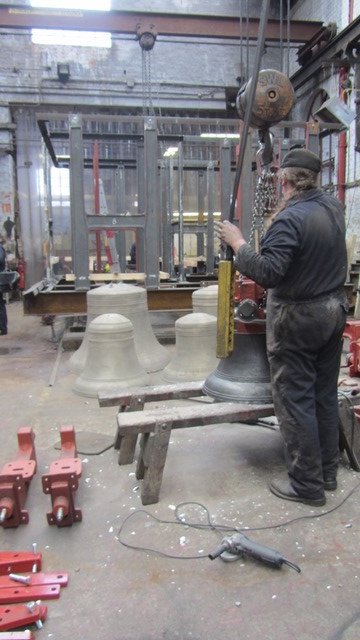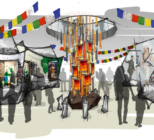Located in the heart of the town they have cast more than 25,000 bells since it was built in 1859, which are now ringing across the globe.
Working as part of Caroe architect’s project team we will provide Interpretive Strategy and Design Services for the Trust’s vision to ensure the future of the site, attract greater numbers of visitors and increase awareness and understanding of the importance of Taylor’s.
The project vision includes:
- Repairing the iconic Victorian casting hall and workshop where bells are created and brought to life
- Preserving and expanding the vast archive which relates to over 10,000 bells and bell towers around the globe
- Improving access to the site so that anyone can visit and experience the uniqueness
- Overhauling and improving the only bell museum in the country
- Repairing the magical tuning shop where harmonic tuning was invented in the 1890s and the sound that we all recognise and love was created
- Reinstating the world’s first harmonically tuned Carillon
- Reengage with young people and learners to preserve a unique skills set

The foundry, rescued from administration a few years ago, has been on its current site since the 1850’s but its origins stretch back to the 14th Century. Taylor’s bells ring all over the world from our home city of York, in the Minster, to Christchurch Cathedral in New Zealand, and you can even hear one tolling on the AC/DC track Hells Bells.
They are still made using the more labour intensive, centuries old loam process which experts believe give the bells a better sound. This process involves a considerable amount of time as each layer is dried in a kiln overnight before the next is added. All the inscriptions and decorations are pressed into the final layer of wet loam as the mould is completed.


Although this is a very costly process the worlds finest bell experts agree that it is a vital factor in producing the sweet toned bells for which the Foundry is known. A pit is also still dug in the floor for each mould to be buried in before casting. Most bell founders abandoned doing this in the 19th Century to save both time and money, but the experts at Loughborough are convinced that allowing the bell to cool slowly in the earth over a period of days gives a better molecular structure and therefore better sounding bell. Communities all over the world agree.

They have even perfected the sound created, by pioneering the five tone principle of bell tuning in 1896, which results in the bells sounding rich and full with mellowness.
When Becky and Anna from the PLB team visited in June for a start up meeting they were lucky enough to see one being cast. Becky said, “each stage of the process involves an incredible amount of skill from fine tuning to typesetting the name within the bell backwards, the bell we saw was destined for Sri Lanka.” They witnessed the bell being cast from a viewing gallery above the intense heat and fumes and agreed it was a fantastic experience.
It is said that everyday 20 million people in Britain hear the chimes of a bell cast at Taylors of Loughborough and we are delighted to be part of the team helping to ensure that this ancient industry doesn’t disappear forever.










